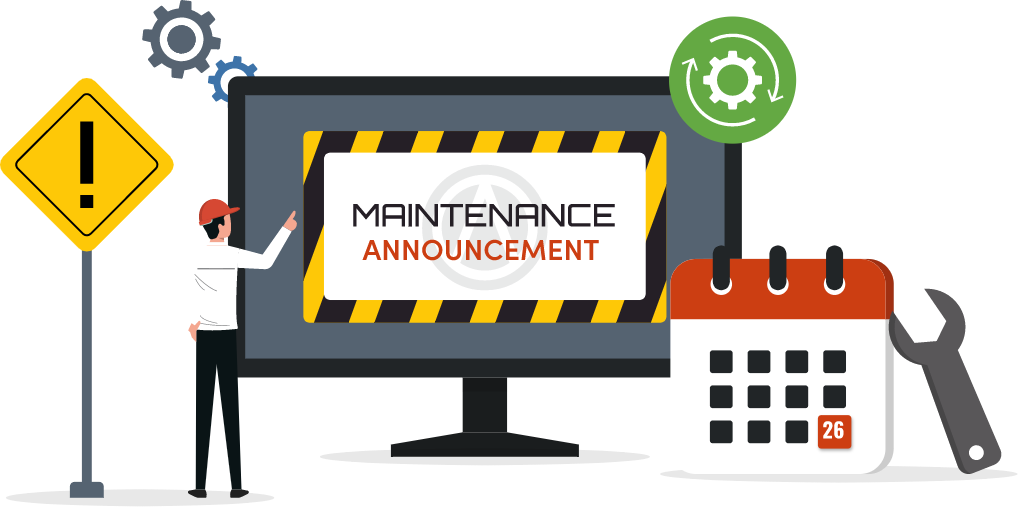How do I ensure compliance and safety during restaurant onboarding?
Train employees on food safety, hygiene, labor laws, and workplace safety procedures from day one. Clear guidelines reduce accidents, legal risks, and stress while building a culture of professionalism.
Onboarding for New Employees in Restaurants
Overview
Running a restaurant means more than keeping the kitchen busy and the dining room full - it's about building a reliable, motivated team that can deliver consistently. In the restaurant industry, turnover is notoriously high. Reports show that annual turnover rates often exceed 70%, with many new hires leaving within their first 90 days. For owners, this creates a constant cycle of hiring, training, and replacing staff, which costs both time and money.
This is where onboarding becomes critical. A structured onboarding process sets the tone for how employees view their role and their place in your restaurant. It goes beyond paperwork or a quick walk-through of duties - it's about making new hires feel welcomed, confident, and equipped to succeed. When done right, onboarding helps reduce mistakes on the floor, improves customer service, and increases the likelihood that employees will stay longer.
Think of onboarding as an investment in your restaurant's stability. Employees who understand their responsibilities and feel supported from day one are far more likely to perform well under pressure, work effectively with their team, and deliver the type of service that keeps customers returning. In fact, research shows that employees who experience effective onboarding are 69% more likely to remain with an employer for at least three years.
Setting the Right First Impression

The first day on the job can make or break an employee's decision to stay. For many restaurant workers, those first few hours determine whether they feel welcomed and motivated, or overlooked and uncertain. As an owner, creating a strong first impression isn't just about being polite - it's about laying the foundation for employee confidence and long-term commitment.
A good onboarding experience begins before the new hire even arrives. Simple gestures like sending a welcome message or preparing a uniform in advance can make a big difference. When they walk through the door, ensure someone is ready to greet them. A quick introduction to the team and a tour of the restaurant helps remove the awkwardness of starting somewhere new. Employees who feel acknowledged from day one are more likely to engage positively with their work.
Clarity also matters. New employees should understand their schedule, where to clock in, and who to go to with questions. Providing a clear outline of what the first week will look like avoids unnecessary stress and confusion. Even small touches - like showing them where to grab a staff meal or where to store personal items - help employees feel more at ease.
Data supports the value of these efforts. Research shows that employees who have a positive onboarding experience are over 50% more productive in their first few weeks compared to those who don't. In a fast-paced restaurant environment, that productivity boost translates into better service, fewer mistakes, and less time spent correcting avoidable errors.
Clear Communication of Roles and Expectations
One of the most common reasons new restaurant employees feel overwhelmed - or even quit early - is unclear expectations. When responsibilities are vague, new hires end up second-guessing themselves, making avoidable mistakes, or feeling like they are constantly falling short. As a restaurant owner, setting clear expectations from the very beginning is one of the most powerful ways to build confidence and reduce unnecessary stress.
Start with the basics - job responsibilities. If someone is a server, cook, or host, outline exactly what tasks they are expected to handle during a shift. This doesn't mean overwhelming them with every detail on the first day, but rather providing a structured guide they can refer to. A written checklist or a simple training manual can be invaluable here - it gives employees a reference point when they're unsure, reducing the need to interrupt managers or coworkers repeatedly.
Clarity also extends to performance standards. Define what "good service" looks like in your restaurant. For example, how quickly should tables be greeted? What are the standards for food presentation? What tone of voice should be used when interacting with guests? The more precise you are, the less room there is for confusion.
Data shows that employees who understand their role and expectations are 23% more likely to be engaged at work. In a restaurant, that engagement translates into faster service, better teamwork, and improved customer satisfaction. On the flip side, unclear expectations can contribute to high turnover - something the restaurant industry already struggles with.
By communicating openly and consistently, you also show empathy. Employees feel respected when owners are transparent about what's expected and are willing to answer questions. It builds trust and reinforces that everyone is working toward the same goal- delivering excellent food and service while keeping the restaurant running smoothly.
Hands-On Training for Faster Skill Development
In restaurants, learning by doing is often the fastest and most effective way for employees to gain confidence. Unlike industries where training can be done entirely in classrooms or through manuals, restaurant work is highly practical - serving tables, handling food, managing orders, and interacting with customers all require real-time practice. That's why hands-on training is one of the most important elements of onboarding for new employees.
The best approach is to use a simple cycle - demonstrate, practice, and give feedback. For example, when training a server, first demonstrate how to greet a table and take an order. Then, let the employee practice with either another staff member or real customers under supervision. Finally, provide immediate, constructive feedback so they know what went well and what needs adjustment. This approach not only speeds up learning but also builds confidence because employees see improvement in real time.
Consistency in training is critical. If one trainer tells an employee to serve bread a certain way, and another trainer says something completely different, it creates confusion and frustration. Standardized processes - backed by written guidelines or checklists - ensure every employee learns the same procedures and delivers the same quality of service.
Hands-on training also reduces costly mistakes. Research shows that employees who receive structured, practical training make over 25% fewer errors in their first 90 days compared to those who don't. In a restaurant, that could mean fewer incorrect orders, safer food handling, and smoother operations during peak hours.
Finally, remember to keep training empathetic. Mistakes are part of learning, and new hires need reassurance that errors are expected at the beginning. By creating a supportive environment where staff can practice, fail safely, and try again, you build a team that is both skilled and confident in delivering excellent service.
Role Shadowing as a Learning Tool

Even with clear explanations and structured training, nothing compares to watching an experienced employee perform a role in real time. Role shadowing allows new hires to observe how tasks are carried out during an actual shift, bridging the gap between theory and practice. For restaurant owners, incorporating shadowing into onboarding ensures new staff learn not only the mechanics of the job but also the flow, pace, and teamwork that make a restaurant run smoothly.
Shadowing works best when it's intentional. Assign new employees to shadow your most reliable and skilled staff members - those who not only know the role but also demonstrate the culture and service standards you want to reinforce. For example, a new server can watch how an experienced one manages multiple tables at once, prioritizes tasks, and communicates with the kitchen. Similarly, a new cook can observe how food prep is organized to maximize efficiency and maintain hygiene.
Timeframes for shadowing should vary by role. A front-of-house employee may need just one or two shifts of observation before trying tasks themselves, while back-of-house roles such as line cooks may require more extended shadowing to fully grasp food preparation and safety standards. The goal is to let new hires see the rhythm of the job before throwing them into full responsibility.
Data backs up the value of this method. Studies show that employees who undergo job shadowing during onboarding feel 30% more confident when transitioning into their roles. Confidence directly impacts performance - fewer errors, faster service, and less stress during busy hours.
Beyond technical skills, shadowing also helps new hires understand team dynamics. They learn who to approach with questions, how staff communicate under pressure, and how collaboration keeps the restaurant moving. It's not just about teaching tasks - it's about integrating employees into the culture of the restaurant.
Compliance and Safety Basics
While customer service and food quality often take center stage in training, compliance and safety are just as important. Restaurants operate in a highly regulated environment, and overlooking these areas during onboarding can lead to serious risks - both legal and financial. For new employees, clear training on safety standards and compliance rules not only protects the business but also creates a workplace where they feel secure and supported.
Food safety should be a top priority. New hires need to understand proper food handling, storage temperatures, cross-contamination prevention, and hygiene practices such as frequent handwashing. These aren't just best practices - they're legal requirements. According to the CDC, 1 in 6 Americans get sick from foodborne illnesses each year, and improper restaurant practices are often a contributing factor. Training employees on safety protocols from day one helps reduce these risks dramatically.
Labor laws and workplace compliance also matter. Employees should be informed about policies such as fair scheduling, breaks, overtime rules, and harassment prevention. Many new hires - especially those entering the workforce for the first time - may not be aware of their rights or the standards your restaurant must meet. Being transparent about these rules builds trust and reduces the chance of disputes later.
Beyond legal obligations, safety training extends to practical workplace practices - safe knife handling, proper lifting techniques, and emergency procedures. Employees who know how to handle hazards feel less stressed and more capable in their roles. Research shows that workplaces prioritizing safety see a 20-40% reduction in accidents and injuries, which not only protects your staff but also prevents costly disruptions.
By covering compliance and safety basics early, you're not just checking a box - you're sending a message. You're showing new employees that their well-being matters, that your restaurant operates with integrity, and that they're part of a professional and responsible team. This foundation helps create a culture where both staff and guests feel protected.
Continuous Feedback and Support During the First 30 Days
Onboarding doesn't end after the first day or even the first week - it's a process that extends over the initial 30 days and sometimes beyond. During this critical period, continuous feedback and support are essential to help new employees gain confidence, develop skills, and integrate fully into your restaurant's team. Without it, even the best initial training can fall short, leaving employees uncertain and frustrated.
Regular check-ins are a practical way to provide support. Schedule short conversations at the end of shifts or once a week to discuss what's going well, identify areas for improvement, and answer questions. These meetings should be constructive, focusing on solutions rather than just pointing out mistakes. Research shows that employees who receive consistent feedback are up to 12 times more likely to feel engaged and motivated. In a restaurant setting, that engagement translates directly into faster service, better teamwork, and fewer errors on the floor.
Support also means being approachable and available. Encourage new hires to ask questions, share concerns, and seek clarification whenever they need it. Make sure they know who to go to for guidance - whether it's a shift supervisor, trainer, or manager. When employees feel supported, they are more likely to take initiative and adapt quickly to busy or challenging shifts.
It's also important to recognize progress. Celebrating small wins - such as mastering a section, learning a new recipe, or improving speed without sacrificing quality - reinforces confidence and motivation. Positive reinforcement, combined with constructive guidance, helps employees feel valued and understood.
By maintaining structured feedback and consistent support throughout the first 30 days, restaurant owners can significantly reduce turnover, build stronger teams, and ensure new hires transition smoothly from trainees to confident, independent staff members who contribute to the overall success of the restaurant.
Building a Sustainable Onboarding Process
Onboarding is not a one-time task - it's a continuous, structured process that sets the foundation for long-term success. For restaurant owners, creating a repeatable onboarding system ensures that every new employee receives the same level of training, support, and guidance, regardless of when they join. A sustainable process reduces mistakes, shortens the learning curve, and improves overall team performance.
Start by documenting your onboarding procedures. Include checklists for role-specific training, compliance steps, shadowing schedules, and feedback routines. Standardized documentation ensures consistency and provides a clear road-map for both trainers and new hires. Pair this with regular reviews of your process to identify areas for improvement or to adjust for changes in operations.
Technology can make this process far easier. Platforms like Altametrics streamline onboarding by centralizing training materials, scheduling, and task tracking. With Altametrics, you can automate reminders, assign training modules, and track completion in real time - making it easier to ensure no step is skipped. This level of organization reduces administrative stress for managers and gives new employees a clear, structured path to success.
Sustainable onboarding also fosters a culture of accountability and engagement. When employees know what to expect and feel supported from day one, they are more confident, productive, and committed to your restaurant's goals. Over time, this translates into lower turnover, stronger teamwork, and better customer experiences.
Take the first step toward creating a seamless onboarding experience today. Explore Altametrics by clicking "Request a Demo" below.
Must-Read Content

Creating a Hospitality On-Boarding Program That Reflects Your Brand

How to Use Technology to Streamline Your Restaurant's On-Boarding Process


New Employee Onboarding Checklist for Restaurant Owners










